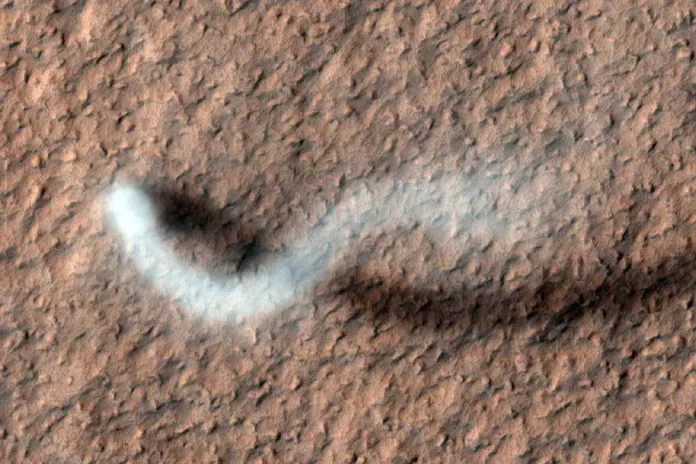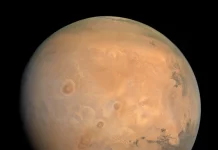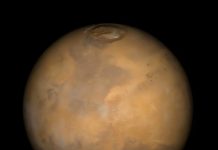
Mars may look calm and quiet from far away, but the Red Planet is far more dynamic than we once thought.
New research led by scientists at the University of Bern shows that winds and swirling dust storms on Mars—known as dust devils—can reach speeds of up to 160 kilometers per hour.
That’s stronger than expected, especially considering Mars’ thin atmosphere.
The study offers fresh insight into the planet’s powerful weather patterns and could help shape future missions to Mars.
Dust devils are like small tornadoes that lift fine red dust into the air and move across the Martian surface.
Although the wind itself is invisible, these spinning columns of dust make it possible for scientists to study wind behavior.
The research team, led by Dr. Valentin Bickel from the Center for Space and Habitability at the University of Bern, found that the winds around these dust devils are much faster than earlier estimates.
Such strong winds could explain how so much dust gets lifted into the atmosphere—something that plays a major role in shaping Mars’ climate and weather.
To reach these findings, the team used machine learning to analyze more than 50,000 satellite images taken by two European Space Agency cameras: the Color and Stereo Surface Imaging System (CaSSIS) on the ExoMars Trace Gas Orbiter, and the High Resolution Stereo Camera (HRSC) on Mars Express.
By using deep learning technology, they were able to automatically detect dust devils in the images.
The researchers then studied about 300 of these dust devils in detail using pairs of stereo images—two photos taken seconds apart—to measure their direction and speed.
The results were striking. The winds surrounding dust devils reached up to 44 meters per second—about 160 kilometers per hour—across many regions of Mars.
This is far greater than the 50 to 100 kilometers per hour that earlier ground measurements had suggested.
According to the researchers, such powerful winds likely lift much more dust into the atmosphere than previously believed, affecting the global dust cycle that influences Mars’ temperature and weather conditions.
Understanding wind behavior on Mars isn’t just important for science—it’s also vital for future exploration.
Strong winds can threaten landers, rovers, and equipment on the surface. With better knowledge of how and where these winds occur, engineers can design safer systems and mission plans.
As co-author Daniela Tirsch from the German Aerospace Center notes, these findings will improve models of the Martian atmosphere and help scientists better predict surface conditions.
The research team plans to continue observing dust devils using coordinated imaging from both cameras.
Their long-term goal is to build a complete picture of Martian wind activity, helping future missions operate more safely and efficiently on the planet’s surface.
Source: KSR.



